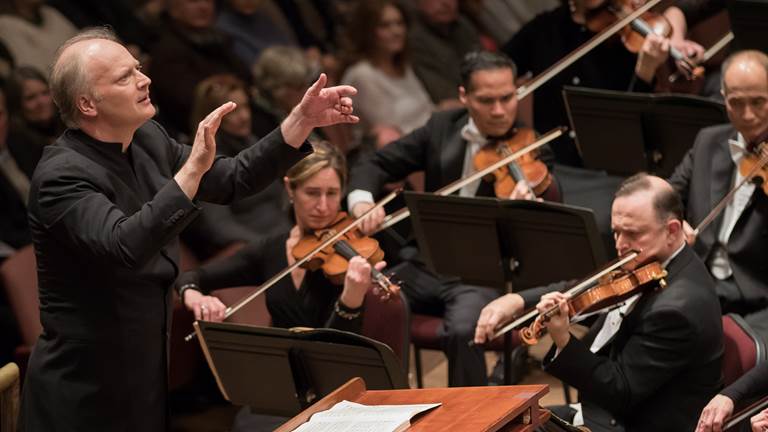Arnold Schoenberg was born in Vienna on September 13, 1874, to the merchant Samuel Schoenberg and his wife Pauline. Within eight years, he learned to play the violin and began to compose.
Schoenberg apprenticed with a bank clerk when he was sixteen following his father’s death. He did not pursue banking and instead joined the orchestra “Polyhymnia” in 1891. He maintained a lifelong friendship with Alexander von Zemlinsky, the conductor of the orchestra. He became conductor of the metalworker-choir in Stockerau in 1895.
At the age of twenty, he came forward with his first original composition of a few piano pieces and began to take lessons with his friend Zemlinsky. In 1901, he married Zemlinksky’s sister, Mathilde, and they moved to Berlin. Thanks to a recommendation from Strauss, he was appointed to teach at Berlin’s Stern Academy.
Two years later, he returned to Vienna to start a private teaching school. Berg and Webern, who would carry forth his art of atonality, became his first pupils. His brother-in-law, Zemlinsky, introduced him to the then court opera director Gustav Mahler, who gave his support to Schoenberg.
Around this time, Schoenberg first began to stretch the realm of tonality and began to move more towards composing atonal pieces. The year 1906 may be considered as one of the numerous births of modern music.
Schoenberg’s music caused a cultural shock. The legendary “scandal concert” of 1908, where his String Quartet #2, op.10 and the Chamber Symphony (op.9) were performed for the first time, was received with a lack of understanding by the press and with vociferous protests by the public. People hurled insults at the composer during the performance itself, and the reporters rushed back to the offices to declare Schoenberg “insane.”
In 1912, Schoenberg returned to Berlin to conduct a few of his pieces. Now Schoenberg was experimenting in every possible way. In Pierrot Lunaire, he mixes conventional speech and singing to form an altogether different form of vocalization. Berlin was also where he began his composition in the twelve-tone series, also known as dodecaphony.
These type of compositions were considered part of a larger group, known as serialism, in which compositions were mathematical rather than original. In 1923, his wife, Mathilde, died. He remarried ten months later and seemed to be quite happy with his new wife.
He began work on his new opera, Moses und Aron. At first, the piece was called Moses und Aaron; but, due to his fear of the number thirteen, he quickly cut the second ‘a’ from the title. His stay in Berlin was cut short in 1933 by the rise of the Nazi Party. Since Schoenberg was Jewish, he quickly left Germany for the U.S. He stayed in Los Angeles the rest of his life, teaching at the University of Southern California and at UCLA.
His later works tried to blend the traditional classical music with his twelve-tone series, but the product was still the same: an undecipherable piece of pure genius. During the last year of his life, he composed more religious pieces such as A Survivor from Warsaw. He died on July 13, 1951.
His pieces added life to the aging romantic age. Yet the pieces were beyond his time and still are today. His greatest contribution to music was the development of the twelve-tone series. Along with Stravinsky, Schoenberg is one of the two greatest influences in the twentieth century, and their marks will last a lifetime.




